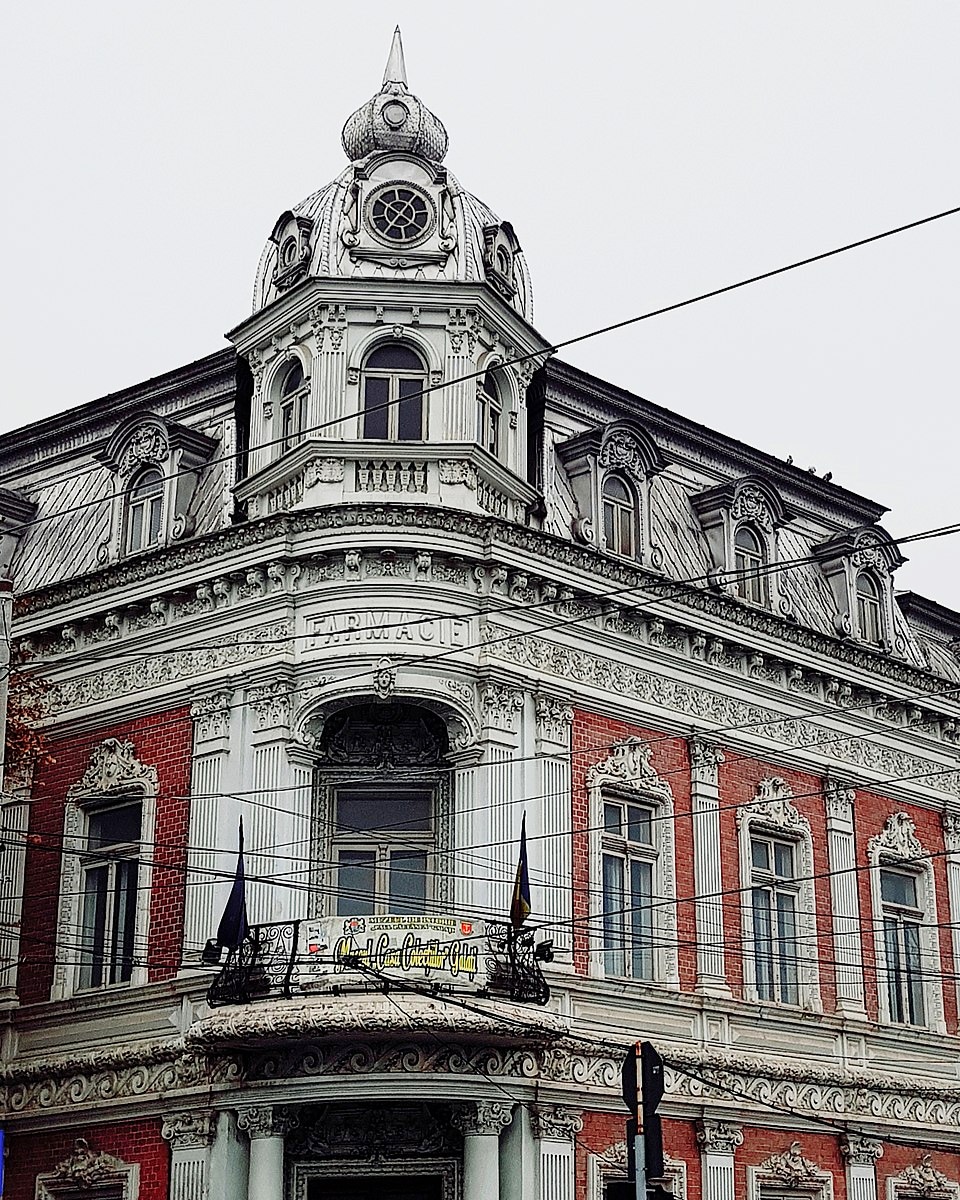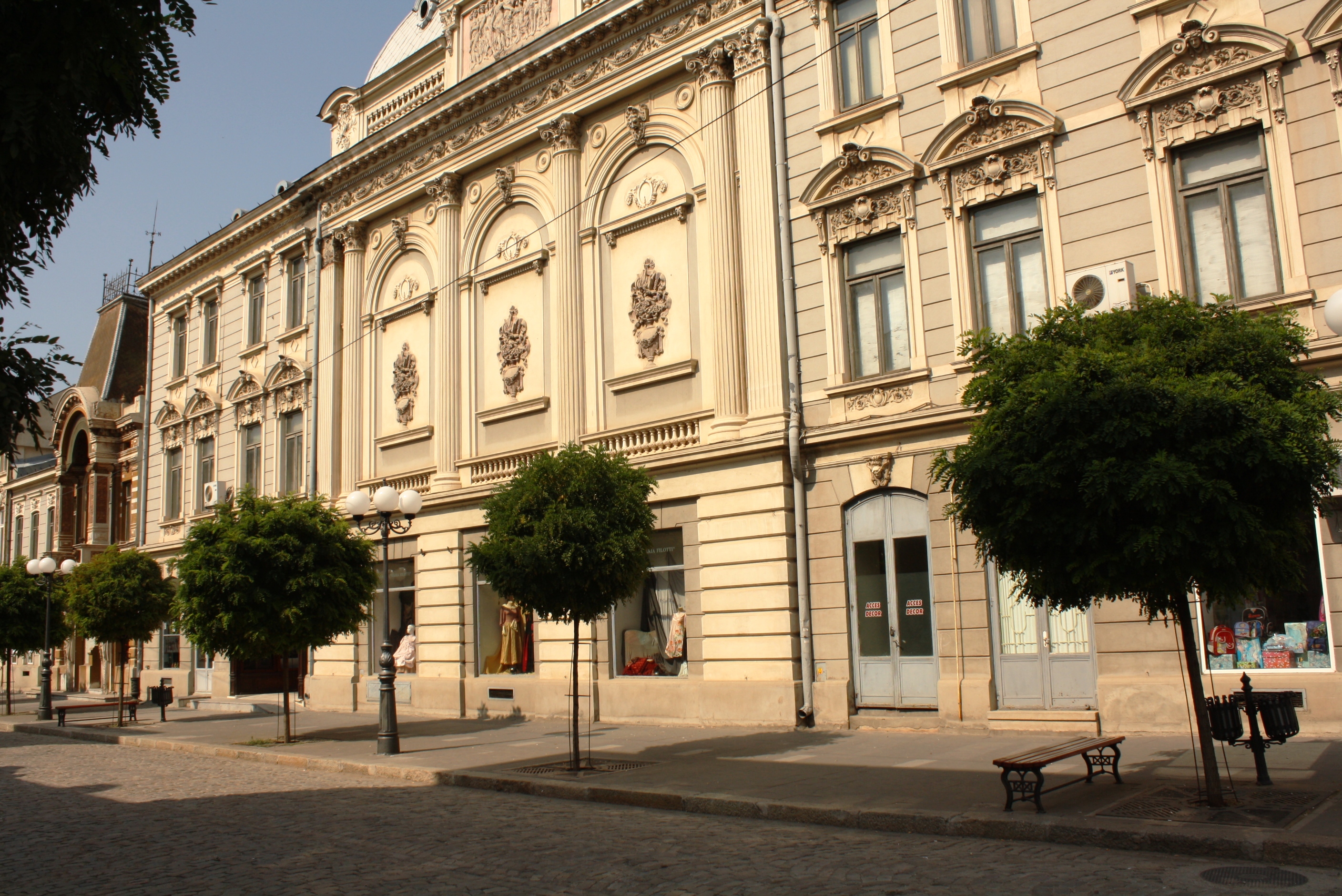|
Weaver Building
The Weaver building was a flour mill and corn storage building which formerly stood alongside the half-tide basin of the North Dock in Swansea, South Wales. Standing at six storeys high, 80 ft by 40 ft by 112 ft, with its lower floor cantilevered some 10 ft above loading bays, it formed part of a complex of buildings owned by Weaver & Co. and was designed and built by the French engineer Francois Hennebique in 1897, being an early example of reinforced concrete building in Europe. The Weaver building survived World War II bombings in 1941, the general post-war clearance of other industrial buildings in the area and the filling in of the adjacent basin in the late 1960s, but was demolished in 1984 to make way for a new Sainsbury's superstore that now stands on the site. A column from the fifth floor of the original building was preserved by the Science Museum, with another piece going to Amberley Museum. Another fragment lies by the side of the river Tawe, ... [...More Info...] [...Related Items...] OR: [Wikipedia] [Google] [Baidu] |
Flour Mill
A gristmill (also: grist mill, corn mill, flour mill, feed mill or feedmill) grinds cereal grain into flour and middlings. The term can refer to either the grinding mechanism or the building that holds it. Grist is grain that has been separated from its chaff in preparation for grinding. History Early history The Greek geographer Strabo reports in his ''Geography'' a water-powered grain-mill to have existed near the palace of king Mithradates VI Eupator at Cabira, Asia Minor, before 71 BC. The early mills had horizontal paddle wheels, an arrangement which later became known as the " Norse wheel", as many were found in Scandinavia. The paddle wheel was attached to a shaft which was, in turn, attached to the centre of the millstone called the "runner stone". The turning force produced by the water on the paddles was transferred directly to the runner stone, causing it to grind against a stationary "bed", a stone of a similar size and shape. This simple arrangement re ... [...More Info...] [...Related Items...] OR: [Wikipedia] [Google] [Baidu] |
Tawe
The River Tawe (; cy, Afon Tawe ) is a long river in South Wales. Its headwaters flow initially east from its source below Llyn y Fan Fawr south of Moel Feity in the Black Mountains, the westernmost range of the Brecon Beacons National Park, before the river turns south and then southwest to its estuary at Swansea. Its main tributaries are the right bank Upper and Lower Clydach Rivers and the Afon Twrch. The total area of the catchment is some . The Tawe passes through a number of towns and villages including Ystradgynlais, Ystalyfera, Pontardawe, and Clydach and meets the sea at Swansea Bay below Swansea. The Tawe Valley ( in Welsh) is more commonly known as the Swansea Valley. Ownership of the riverbed was granted to the Duke of Beaufort in the 17th century by Charles II resulting in exclusive mineral and fishing rights, which is extended as far as requiring permission and payment for bridges which are built over it. This was last exercised in 2008 when Swanse ... [...More Info...] [...Related Items...] OR: [Wikipedia] [Google] [Baidu] |
Buildings And Structures Demolished In 1984
A building, or edifice, is an enclosed structure with a roof and walls standing more or less permanently in one place, such as a house or factory (although there's also portable buildings). Buildings come in a variety of sizes, shapes, and functions, and have been adapted throughout history for a wide number of factors, from building materials available, to weather conditions, land prices, ground conditions, specific uses, prestige, and aesthetic reasons. To better understand the term ''building'' compare the list of nonbuilding structures. Buildings serve several societal needs – primarily as shelter from weather, security, living space, privacy, to store belongings, and to comfortably live and work. A building as a shelter represents a physical division of the human habitat (a place of comfort and safety) and the ''outside'' (a place that at times may be harsh and harmful). Ever since the first cave paintings, buildings have also become objects or canvasses of much artistic ... [...More Info...] [...Related Items...] OR: [Wikipedia] [Google] [Baidu] |
Industrial Buildings Completed In 1897
Industrial may refer to: Industry * Industrial archaeology, the study of the history of the industry * Industrial engineering, engineering dealing with the optimization of complex industrial processes or systems * Industrial city, a city dominated by one or more industries * Industrial loan company, a financial institution in the United States that lends money, and may be owned by non-financial institutions * Industrial organization, a field that builds on the theory of the firm by examining the structure and boundaries between firms and markets * Industrial Revolution, the development of industry in the 18th and 19th centuries * Industrial society, a society that has undergone industrialization * Industrial technology, a broad field that includes designing, building, optimizing, managing and operating industrial equipment, and predesignated as acceptable for industrial uses, like factories * Industrial video, a video that targets “industry” as its primary audience * Industr ... [...More Info...] [...Related Items...] OR: [Wikipedia] [Google] [Baidu] |
Anghel Saligny
Anghel Saligny (; 19 April 1854, Șerbănești, Moldavia – 17 June 1925, Bucharest, Romania) was a Romanian engineer, most famous for designing the Fetești-Cernavodă railway bridge (1895) over the Danube, the longest bridge in Europe at that time. He also designed the storage facilities in Constanța seaport, one of the earliest examples of reinforced concrete architecture in Europe. Biography Saligny was born in Șerbănești, Tecuci County (nowadays, Galați County). His father, Alfred Saligny, an educator of French descent, was an immigrant to Moldavia, coming from Prussia. He started his studies at the boarding school founded by his father in Focșani, then went on to high school, initially also in Focșani and then in Potsdam, Germany. He pursued engineering studies at the Royal Technical Higher School in Charlottenburg, and then contributed to the construction of railways in Saxony (Cottbus-Frankfurt an der Oder). He was a founding member of the Bucharest Polyt ... [...More Info...] [...Related Items...] OR: [Wikipedia] [Google] [Baidu] |
Romania
Romania ( ; ro, România ) is a country located at the crossroads of Central Europe, Central, Eastern Europe, Eastern, and Southeast Europe, Southeastern Europe. It borders Bulgaria to the south, Ukraine to the north, Hungary to the west, Serbia to the southwest, Moldova to the east, and the Black Sea to the southeast. It has a predominantly Temperate climate, temperate-continental climate, and an area of , with a population of around 19 million. Romania is the List of European countries by area, twelfth-largest country in Europe and the List of European Union member states by population, sixth-most populous member state of the European Union. Its capital and largest city is Bucharest, followed by Iași, Cluj-Napoca, Timișoara, Constanța, Craiova, Brașov, and Galați. The Danube, Europe's second-longest river, rises in Germany's Black Forest and flows in a southeasterly direction for , before emptying into Romania's Danube Delta. The Carpathian Mountains, which cross Roma ... [...More Info...] [...Related Items...] OR: [Wikipedia] [Google] [Baidu] |
Galați
Galați (, , ; also known by other alternative names) is the capital city of Galați County in the historical region of Western Moldavia, in eastern Romania. Galați is a port town on the Danube River. It has been the only port for the most part of Moldavia's existence. In 2011, the Romanian census recorded 249,432 residents, making it the 8th most populous city in Romania. Galați is an economic centre based around the port of Galați, the naval shipyard, and the largest steel factory in Romania, Galați steel works. Etymology and names The name ''Galați'' is derived from the Cuman word . This word is ultimately borrowed from the Persian word , "fortress". Other etymologies have been suggested, such as the Serbian . However, the ''galat'' root appears in nearby toponyms, some of which show clearly a Cuman origin, for example Gălățui Lake, which has the typical Cuman -''ui'' suffix for "water". Another toponym in the region is Galicia, with its town of Halych, locally ... [...More Info...] [...Related Items...] OR: [Wikipedia] [Google] [Baidu] |
Brăila
Brăila (, also , ) is a city in Muntenia, eastern Romania, a port on the Danube and the capital of Brăila County. The ''Sud-Est'' Regional Development Agency is located in Brăila. According to the 2011 Romanian census there were 180,302 people living within the city of Brăila, making it the 11th most populous city in Romania. The current mayor of Brăila is . History Origins Before 14th century, a small village existed in the place of today's Brăila, probably inhabited by fishermen and small merchants.Rădvan, p.248 The village fell to the Mongols during the 1241 Mongol invasion of Europe and it was under direct control of the rulers of Argeș in mid-14th century. A settlement called ''Drinago'' was found in several 14th century Catalan and Castillian portolan charts ( Angelino de Dalorto, 1325/1330 and Angelino Dulcert, 1339), as well as in the ''Book of Knowledge of All Kingdoms''. This may have been an erroneous transcription of ''Brillago'', a name which was l ... [...More Info...] [...Related Items...] OR: [Wikipedia] [Google] [Baidu] |
Constanța
Constanța (, ; ; rup, Custantsa; bg, Кюстенджа, Kyustendzha, or bg, Констанца, Konstantsa, label=none; el, Κωνστάντζα, Kōnstántza, or el, Κωνστάντια, Kōnstántia, label=none; tr, Köstence), historically known as Tomis ( grc, Τόμις), is the oldest continuously inhabited city in Romania, founded around 600 BC, and among the oldest in Europe. A port-city, it is located in the Northern Dobruja region of Romania, on the Black Sea coast. It is the capital of Constanța County and the largest city in the historical region of Dobrogea. Romania’s fifth largest city, it is also the largest port on the Black Sea. As of the 2011 census, Constanța has a population of 283,872. The Constanța metropolitan area includes 14 localities within of the city. It is one of the largest metropolitan areas in Romania. The Port of Constanța has an area of and a length of about . It is the largest port on the Black Sea, and one of the larges ... [...More Info...] [...Related Items...] OR: [Wikipedia] [Google] [Baidu] |
Plaque To Commemorate A Building Significant To Swansea History For Its Construction Method
Plaque may refer to: Commemorations or awards * Commemorative plaque, a plate or tablet fixed to a wall to mark an event, person, etc. * Memorial Plaque (medallion), issued to next-of-kin of dead British military personnel after World War I * Plaquette, a small plaque in bronze or other materials Science and healthcare * Amyloid plaque * Atheroma or atheromatous plaque, a buildup of deposits within the wall of an artery * Dental plaque, a biofilm that builds up on teeth * A broad papule, a type of cutaneous condition * Pleural plaque, associated with mesothelioma, cancer often caused by exposure to asbestos * Senile plaques, an extracellular protein deposit in the brain implicated in Alzheimer's disease * Skin plaque, a plateau-like lesion that is greater in its diameter than in its depth * Viral plaque, a visible structure formed by virus propagation within a cell culture Other uses * Plaque, a rectangular casino token See also * * * Builder's plate * Plac (other) * ... [...More Info...] [...Related Items...] OR: [Wikipedia] [Google] [Baidu] |





